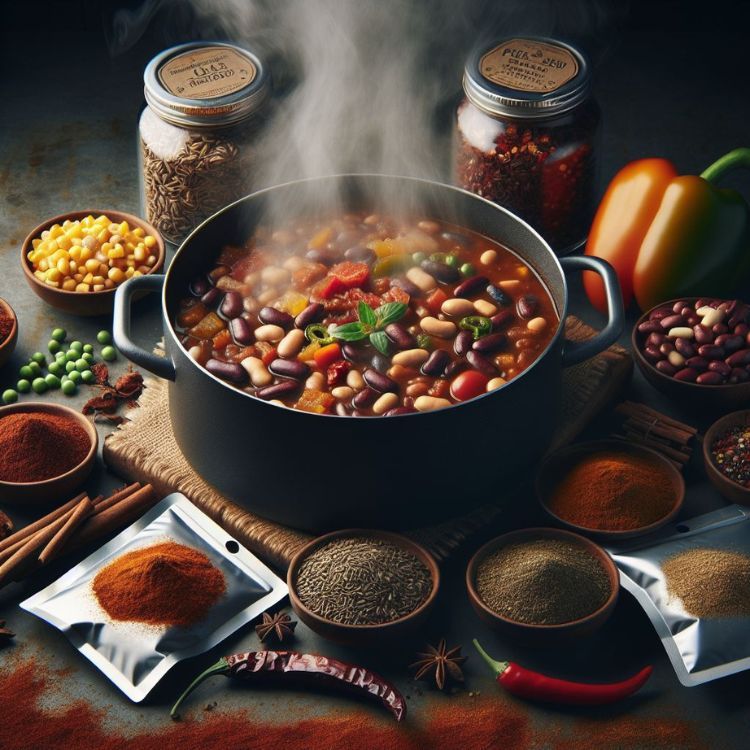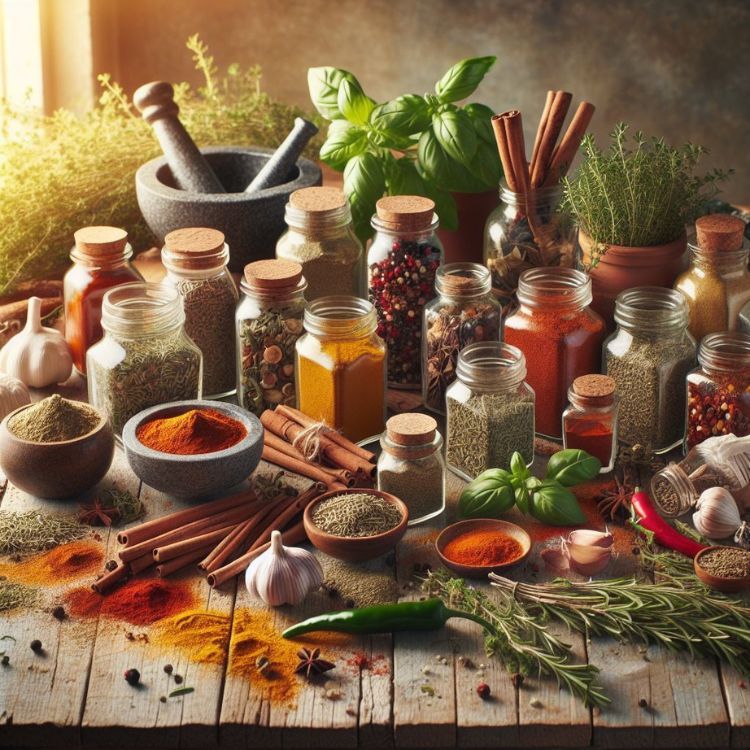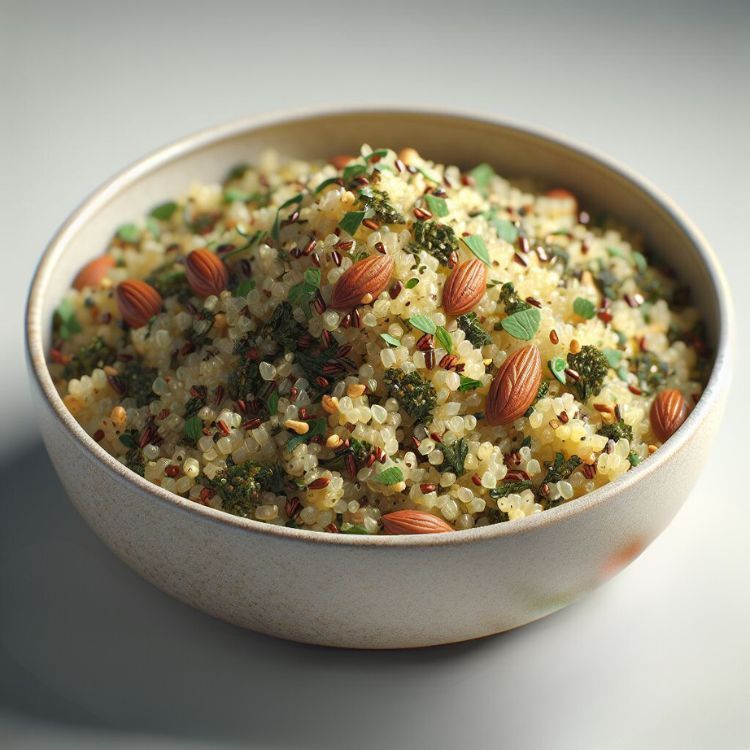
Key Takeaways
-
Gourmet emergency food combines the practicality of long shelf life with the pleasure of delicious flavors.
-
Stocking up on shelf-stable gourmet staples ensures variety and satisfaction in times of need.
-
Herbs and seasonings are simple yet powerful additions that can transform any meal into a gourmet experience.
-
Even in an emergency, it’s possible to enjoy meals that are both nutritious and delightful to the palate.
-
Planning ahead with gourmet emergency food can boost morale and provide comfort during stressful situations.
Why Flavor Matters in Your Emergency Food Plan
When you think about emergency preparedness, taste might not be the first thing that comes to mind. But let’s face it, during a stressful situation, a comforting and flavorful meal can make all the difference. It’s not just about sustenance; it’s about maintaining a sense of normalcy and pleasure in the midst of chaos. That’s why incorporating gourmet elements into your emergency food plan is so important.
The Role of Taste in Nutrition and Morale
Nutrition is crucial, but the flavor of food plays a significant role in our overall well-being. Good-tasting food can boost morale and provide a psychological lift. It’s a reminder of better times and can be a source of comfort when you need it most. Besides that, when food tastes good, we’re more likely to eat it, ensuring we get the nutrition we need to stay healthy and alert.
Defining Gourmet in the Context of Emergencies
Gourmet food, in the context of emergencies, is about elevating the taste and quality of your meals without compromising their shelf-life or practicality. It’s about choosing ingredients that are both delicious and durable, and preparing them in ways that enhance their flavor. This approach ensures that even in an emergency, you can enjoy meals that are a step above the standard fare.
Starting with the Basics: Building Your Flavorful Emergency Food Kit
Creating a gourmet emergency food kit starts with understanding what makes food both shelf-stable and delicious. You’ll want to focus on ingredients that can withstand long-term storage but are also known for their superior taste.
Essential Components of a Gourmet Emergency Kit
-
High-quality grains like quinoa and farro that offer both nutrition and a satisfying texture.
-
Freeze-dried fruits and vegetables that retain their taste and vitamins.
-
Protein sources such as legumes, nuts, and canned meats that are both filling and flavorful.
-
Long-lasting condiments and spices that can transform bland staples into delectable dishes.
-
Luxury items like dark chocolate or gourmet coffee that can lift spirits and provide comfort.
Each of these components brings something special to your emergency food supply. They’re the building blocks of meals that you’ll actually look forward to eating.
Shelf-Stable Gourmet Staples to Stock Up On
When you’re stocking your pantry with emergency food, choose items that are known for their longevity and flavor. Look for vacuum-sealed packages of gourmet dried meats, aged cheeses that can last for months unrefrigerated, and high-quality canned goods with pure ingredients and no added preservatives. These staples will ensure that your emergency meals are both safe to eat and a joy to consume.
Now, let’s dive into how we can reimagine non-perishables and introduce gourmet versions into our emergency food plans. Stay tuned for more insights on how to elevate your emergency preparedness with exquisite flavor.
Elevating Grains: Quinoa, Farro, and More
Grains are the backbone of any emergency food supply. They’re dense in nutrients and calories, which are essential in high-stress scenarios. But who says they have to be boring? Quinoa, farro, and bulgur are excellent gourmet grains that are not only nutritious but also bring a variety of textures and flavors to the table. They cook quickly, can be used in a multitude of recipes, and most importantly, they hold up well in long-term storage.
Quinoa, for example, is a complete protein and is packed with fiber, making it an ideal staple. Farro, with its nutty flavor and chewy texture, can add heartiness to soups and salads. These grains can be seasoned with herbs and spices, combined with freeze-dried vegetables, or even mixed with nuts and dried fruits for a sweet touch. The key is to have a variety of grains on hand to keep meals interesting and nutritious.
Infusing Flavor into Freeze-Dried Fruits and Vegetables
Freeze-dried fruits and vegetables are a mainstay in emergency food supplies because they retain much of their nutritional value and can be stored for years. However, they can also be a source of vibrant flavor. When rehydrated properly, they can closely mimic the taste and texture of fresh produce. Imagine enjoying the sweet tang of freeze-dried strawberries or the savory depth of freeze-dried mushrooms in your meals. With the right techniques, these foods can be transformed into gourmet additions that elevate your emergency dining experience.
By incorporating freeze-dried raspberries into a morning oatmeal or adding freeze-dried peas to a rice pilaf, you create layers of flavor that make each bite satisfying. The trick is to rehydrate these ingredients with care, using clean, hot water and allowing enough time for them to plump up to their natural state. This simple step ensures that your emergency meals are not just nutritious, but also delicious.
Spicing Up Survival: Herbs and Seasonings for Disaster Dining

Herbs and seasonings are the secret weapons in your gourmet emergency food arsenal. They take up little space, have a long shelf life, and can completely transform a dish from bland to grand. A sprinkle of basil can brighten up a tomato sauce, while a dash of cumin can give depth to beans or lentils. The possibilities are endless when you have the right spices at your disposal.
“Never underestimate the power of a well-spiced meal to uplift the spirits during tough times. A simple blend of herbs can turn a pot of rice into an aromatic delight.” – An experienced emergency gourmet
Therefore, when building your emergency food kit, make sure to include a variety of herbs and spices. They not only enhance flavor but also contribute to your overall health, offering antioxidants and other beneficial compounds.
Must-Have Herbs for Any Emergency Kit
-
Dried basil and oregano for Italian-inspired dishes.
-
Cumin and chili powder for Mexican fare.
-
Cinnamon and nutmeg for sweet dishes and baking.
-
Garlic powder and onion powder as all-purpose flavor enhancers.
-
Sea salt and black pepper as the basic seasoning duo.
With these essentials, you can create a wide range of flavors that will make your emergency meals far from mundane. Remember, variety is not just the spice of life; it’s also the spice of survival.
Blends and Spices to Transform Meals
Aside from single herbs and spices, consider stocking up on spice blends. These mixtures are designed to deliver complex flavors with just one ingredient. Think of blends like Italian seasoning, curry powder, or a robust barbecue rub. They are convenient, versatile, and can make meal preparation under duress much simpler and more enjoyable.
But let’s not stop there. Think about adding a gourmet touch with specialty spices like smoked paprika or herbes de Provence. These flavors can make a world of difference in your dishes, offering a taste of luxury even in the most challenging circumstances.
Creative Cooking Under Duress: Recipes for the Resourceful

When you’re in a survival situation, creativity in the kitchen becomes crucial. It’s about making the most of what you have and turning it into something special. One-pot meals are a fantastic way to combine ingredients for maximum flavor with minimal cleanup.
For instance, a simple bean chili can be elevated with the addition of dried spices and freeze-dried vegetables. Or imagine a quinoa pilaf enriched with a medley of freeze-dried herbs and a handful of nuts for added texture. These are the kinds of resourceful recipes that can sustain both body and soul in times of need.
One-Pot Wonders: Easy and Nutritious Gourmet Meals
One-pot meals are not only easy to make but also perfect for conserving fuel and water – two resources that might be limited in an emergency. Here’s a quick guide to creating one-pot wonders:
-
Start with a grain or legume as the base – rice, quinoa, or lentils work well.
-
Add a protein source, such as canned chicken, beans, or freeze-dried meat.
-
Throw in a variety of freeze-dried vegetables for color and nutrients.
-
Season generously with herbs and spices to bring the dish to life.
-
Simmer everything together until the flavors meld and the ingredients are tender.
These one-pot meals are not only efficient but also comforting, proving that emergency food doesn’t have to be dull.
From Seeds to Supper: Growing Fresh Ingredients
Finally, consider the role of homegrown ingredients in your emergency preparedness plan. If you have a garden or even a small space for container plants, growing your own herbs and vegetables can be a game-changer. Not only does it provide fresh, flavorful additions to your meals, but it also offers a sense of accomplishment and self-reliance.
Start with easy-to-grow herbs like basil and parsley, or vegetables like tomatoes and peppers. These can be grown indoors or out and can be used fresh or dried for long-term storage. The act of gardening itself can be therapeutic, and the result is fresh, gourmet ingredients right at your fingertips.
In conclusion, preparing for emergencies doesn’t mean sacrificing flavor. With the right approach, you can enjoy gourmet meals that nourish both body and spirit. Remember, the goal is not just to survive, but to thrive, and exquisite flavors play a crucial role in that mission. Stay tuned for more insights on how to enhance your emergency preparedness with delightful tastes and aromas.
FAQ
How Can I Make My Emergency Food Taste Better?
Improving the taste of your emergency food is easier than you might think. The key is to incorporate a variety of flavors and textures to keep your meals interesting. Here are some tips:
-
Use herbs and spices to add depth and complexity to your dishes.
-
Include a selection of condiments like hot sauce, soy sauce, or mustard to give your food a flavor boost.
-
Mix in nuts, seeds, or dried fruits to add crunch and sweetness to cereals or salads.
-
Experiment with different cooking methods, such as sautéing or simmering, to enhance the natural flavors of your ingredients.
-
Don’t forget about presentation – even in an emergency, taking a moment to arrange your food appealingly can make it more enjoyable to eat.
With these simple adjustments, you can turn basic emergency rations into meals that are both satisfying and delicious.
What Are the Best Gourmet Ingredients to Have on Hand?
When it comes to gourmet ingredients for your emergency stash, focus on items that deliver maximum flavor without requiring refrigeration. For a more in-depth exploration, consider reading about rare heritage seeds and unusual varieties which can add an exotic touch to your meals.
-
High-quality olive oil for cooking and dressings.
-
Aged cheeses like Parmesan that can last without refrigeration.
-
Whole grain mustards and vinegars for marinades and sauces.
-
Sea salt, whole peppercorns, and a variety of dried herbs and spices.
-
Luxury items such as truffle oil or saffron for a touch of indulgence.
These ingredients can elevate even the simplest dishes, ensuring that your emergency meals are anything but ordinary.
How Do I Store Gourmet Ingredients for Longevity?
To ensure your gourmet ingredients last as long as possible, proper storage is key. For instance, understanding the language of greenery can help you determine the best conditions for storing seeds and other plant-based ingredients. Follow these guidelines:
-
Keep your ingredients in a cool, dry place away from direct sunlight.
-
Use airtight containers to protect against moisture and pests.
-
Rotate your stock regularly to use items before they reach their expiration date.
-
For oils and spices, consider smaller bottles to maintain freshness once opened.
-
Invest in high-quality vacuum-sealed packages for items like meats and cheeses.
By taking these steps, you can maximize the shelf life of your gourmet ingredients and be ready to enjoy them when the need arises.
Are There Ready-Made Gourmet Emergency Food Kits Available?
Yes, there are ready-made gourmet emergency food kits available on the market. These kits often include freeze-dried meals that have been crafted with flavor in mind, offering a variety of cuisines and dishes. When selecting a kit, look for one that includes:
-
A range of meal options, from breakfast to dinner and snacks.
-
High-quality ingredients with no artificial preservatives or flavors.
-
Flexible meal preparation options, requiring only water and minimal cooking.
-
Long shelf life, with some kits lasting up to 25 years or more.
These kits are a convenient way to ensure you have tasty, nutritious meals on hand without the need for extensive planning and preparation.
How Can Homegrown Ingredients Play a Role in My Emergency Prep?
Homegrown ingredients can greatly enhance your emergency food supply. They provide fresh, nutrient-rich options and can be dried or canned for long-term storage. Here’s how to integrate homegrown foods into your emergency plan:
-
Start a garden with a variety of vegetables and herbs that are easy to grow and preserve.
-
Learn preservation techniques such as canning, drying, and pickling to extend the shelf life of your harvest.
-
Consider indoor gardening options like window herb gardens for year-round fresh flavors.
-
Save seeds from your garden to ensure a continuous supply of fresh produce.
Not only do homegrown ingredients offer a source of fresh food, but the act of gardening itself can be a stress-reliever and a rewarding hobby that contributes to self-sufficiency.
When considering emergency preparedness, it’s important to include a variety of quick-growing survival seeds that can provide a reliable food source in a short amount of time. This approach not only ensures nutritional diversity but also adds a sense of normalcy and comfort during times of crisis with fresh, home-grown produce.






